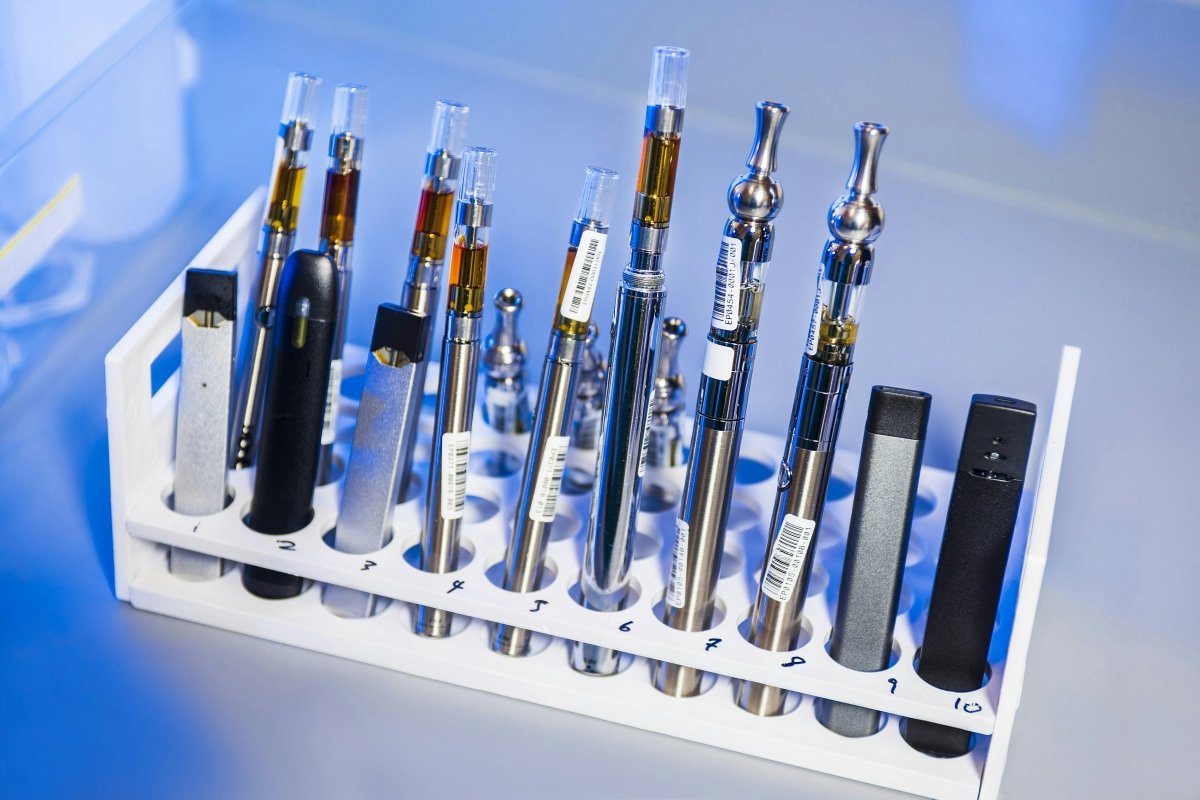How to Quit Vaping: Your Guide to Kicking the Habit

How to Quit Vaping: Your Comprehensive Guide to Kicking the Habit
Embarking on a vape-free journey? You're in the right place.
Vaping, once hailed as a safer alternative to smoking, has become a habit many are now eager to break free from. Whether you're concerned about health implications, escalating costs, or simply regaining control, quitting vaping is a challenge you can conquer.
This comprehensive guide is designed to equip you with the knowledge, strategies, and support you need to successfully quit vaping.
Understanding the Vaping Habit
Before diving into cessation strategies, let's explore why vaping is so addictive.
- Nicotine: The primary addictive substance in most e-liquids, nicotine triggers the release of dopamine in the brain, creating feelings of pleasure and satisfaction. This reinforces the vaping behavior, making it difficult to quit.
- Behavioral Cues: Certain activities or environments can become associated with vaping. For example, you might be accustomed to vaping while driving, socializing, or after meals. These cues can trigger cravings, making it challenging to resist the urge to vape.
- Social Factors: If your friends or family members vape, you might feel pressured to continue the habit. It's important to communicate your decision to quit and seek their support.
Developing Your Quit Plan
A well-structured quit plan significantly increases your chances of success. Here's how to create one:
- Set a Quit Date: Choose a date in the near future and mark it on your calendar. This gives you time to prepare mentally and physically for the transition.
- Identify Your Triggers: Pay attention to the situations or emotions that make you reach for your vape. Recognizing these triggers allows you to develop coping mechanisms or avoid them altogether.
- Choose Your Cessation Method: There are various approaches to quitting vaping, including going cold turkey, gradually reducing nicotine intake, or using nicotine replacement therapy (NRT). We'll discuss these methods in detail later.
- Gather Support: Inform your loved ones about your decision to quit and ask for their encouragement. Consider joining a support group or seeking professional guidance.
- Anticipate Challenges: Quitting is not always a smooth journey. Be prepared for withdrawal symptoms, cravings, and setbacks. Having a plan to manage these challenges will help you stay on track.
Effective Strategies to Quit Vaping
Here are some proven strategies that can empower you to overcome your vaping addiction:
1. Go Cold Turkey
This method involves abruptly stopping vaping altogether. While it might seem daunting, it can be effective for individuals with strong willpower and minimal nicotine dependence.
Pros:
- Quickest way to eliminate nicotine from your system
- Sense of empowerment from taking decisive action
- No need for additional products or medications
Cons:
- Intense withdrawal symptoms
- Higher risk of relapse due to sudden nicotine deprivation
- Requires significant self-discipline
2. Gradual Reduction
This approach involves gradually decreasing the nicotine strength of your e-liquid or the frequency of your vaping sessions. It allows your body to adjust slowly, minimizing withdrawal symptoms.
Pros:
- Less intense withdrawal experience
- More manageable for individuals with heavy nicotine dependence
- Increased sense of control over the quitting process
Cons:
- Takes longer to become completely nicotine-free
- Requires consistent monitoring and adjustment of nicotine intake
- Potential for prolonged cravings
3. Nicotine Replacement Therapy (NRT)
NRT products, such as patches, gum, or lozenges, deliver controlled doses of nicotine to help manage cravings and withdrawal symptoms.
Pros:
- Reduces cravings and withdrawal discomfort
- Available over-the-counter or with a prescription
- Proven effectiveness in aiding smoking cessation
Cons:
- Continues nicotine dependence, albeit in a less harmful form
- Potential side effects, such as nausea or skin irritation
- Requires gradual weaning off NRT products
4. Behavioral Therapies
These therapies focus on identifying and changing the thoughts and behaviors associated with vaping. They can be delivered individually or in group settings.
Pros:
- Addresses the psychological aspects of addiction
- Provides coping mechanisms for managing triggers and cravings
- Teaches long-term strategies for relapse prevention
Cons:
- Requires commitment to therapy sessions
- May involve confronting uncomfortable emotions or experiences
- Effectiveness can vary depending on individual motivation
5. Alternative Therapies
Some individuals find success with complementary therapies like acupuncture, hypnosis, or meditation. While research on their effectiveness is limited, they might offer additional support for managing withdrawal and cravings.
Navigating Withdrawal Symptoms
Withdrawal symptoms are a common challenge when quitting vaping. They typically peak within the first few days and gradually subside over time. Here are some common symptoms and tips for managing them:
- Cravings: Intense urges to vape. Distract yourself with activities you enjoy, practice deep breathing, or chew on sugar-free gum.
- Irritability: Feeling easily frustrated or agitated. Engage in relaxation techniques like yoga or meditation, or try spending time in nature.
- Anxiety: Feeling restless or nervous. Exercise regularly, get enough sleep, and consider talking to a therapist if anxiety persists.
- Difficulty Concentrating: Trouble focusing or completing tasks. Break down tasks into smaller, manageable steps, and take frequent breaks.
- Headaches: Pain or discomfort in the head. Stay hydrated, get enough rest, and consider over-the-counter pain relievers if needed.
Remember, these symptoms are temporary and a sign that your body is adjusting to being nicotine-free.
Maintaining Your Vape-Free Lifestyle
Congratulations on quitting vaping! Now, let's focus on staying vape-free for the long term:
- Celebrate Your Success: Acknowledge your accomplishments and reward yourself for your hard work.
- Avoid Triggers: Stay away from situations or people that tempt you to vape.
- Develop Healthy Habits: Replace vaping with positive activities like exercise, spending time with loved ones, or pursuing new hobbies.
- Manage Stress: Stress can be a major trigger for relapse. Find healthy ways to manage stress, such as exercise, meditation, or spending time in nature.
- Stay Connected: Continue attending support groups or connecting with individuals who understand your journey.
- Be Prepared for Setbacks: If you slip up and vape, don't be discouraged. Analyze what triggered the relapse and use it as a learning opportunity to strengthen your resolve.
Your Journey to a Healthier You
Quitting vaping is an investment in your health, well-being, and future. It empowers you to reclaim control over your life and breathe easier.
Remember, you're not alone in this journey. Seek support from loved ones, healthcare professionals, or support groups. With dedication, perseverance, and the right strategies, you can successfully break free from vaping and embrace a healthier, happier you.
Ready to take the first step towards a vape-free life? Explore MisterVape's wide range of vaping alternatives and cessation support products to assist you on your journey.
Remember, quitting vaping is a personal journey, and what works for one person may not work for another. Be patient with yourself, celebrate your progress, and don't hesitate to seek help along the way. You've got this!






